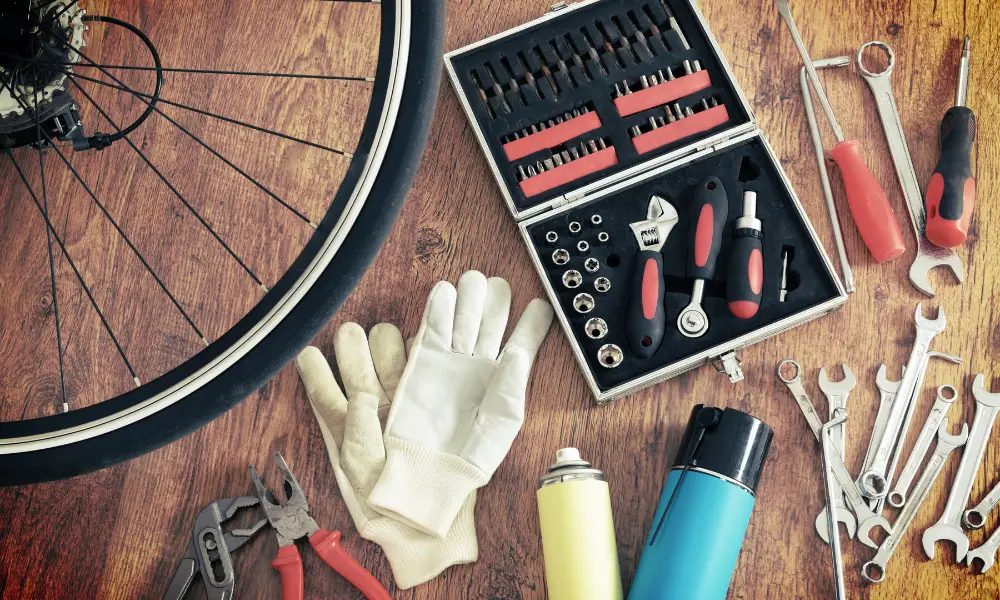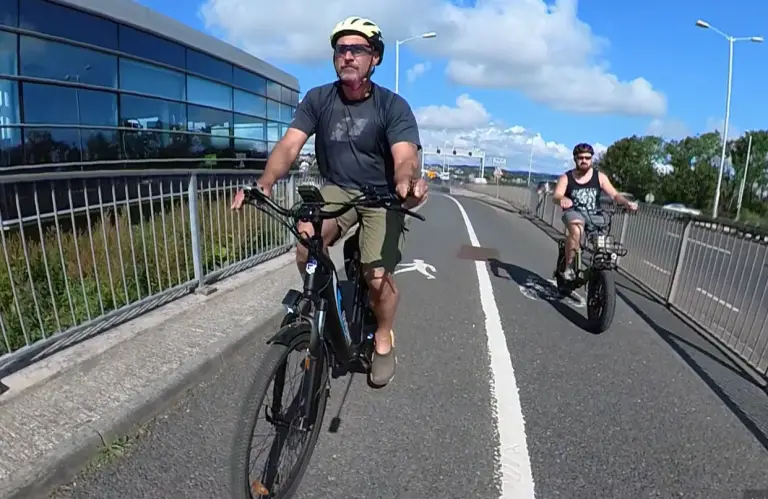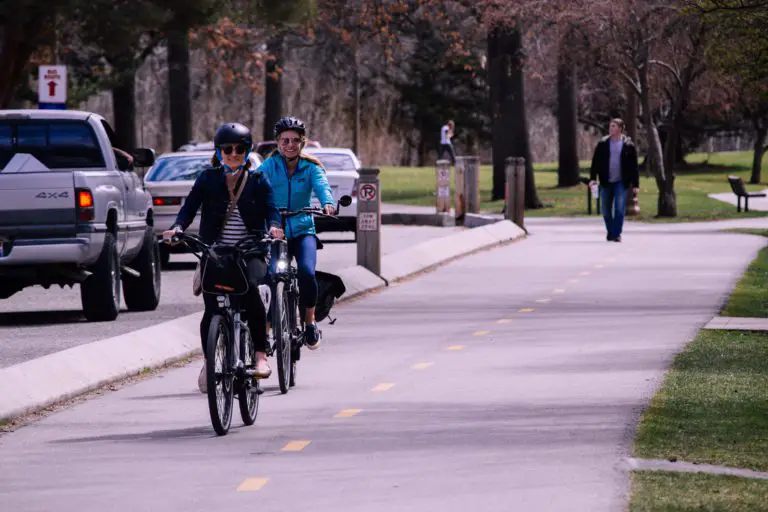When you purchase through links on our website, we may earn a commission. Affiliate disclosure.
E-bikes are great for commuting, leisure riding, or getting from A to B. But, like any other form of transport that’s used regularly, it may encounter technical issues from time to time. In this article, we will discuss common e-bike problems and how to troubleshoot them so you can get back to enjoying your ride as soon as possible.
The author of this article has 6-years of experience in this field, converting bikes to electric and testing many different brands and styles of e-bikes.
Introduction
One of the most common e-bike problems is a dead battery. If your battery is not charging or holding a charge, there may be a problem with the charger or the battery itself. Another issue that can arise is a malfunctioning pedal assist system. A faulty sensor or controller could cause this. Other common problems include issues with brakes, tyres, and gears.
Knowing how to troubleshoot these issues is important, as it can save you time and money on repairs. In the following sections, we will provide tips on diagnosing and fixing common e-bike problems so you can get back to enjoying your ride without any hassle.
Battery Issues
If you own an e-bike, you probably already know the battery is one of the most critical components. Without a properly functioning battery, your e-bike won’t run, and you’ll be pedalling a heavy bike under your own steam. Here are some common battery issues you may encounter and how to fix them.
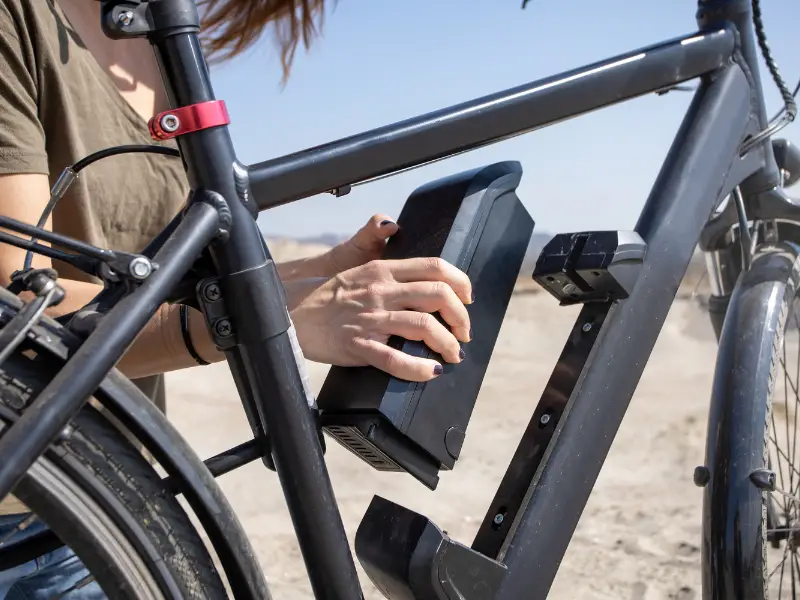
Battery Not Holding a Charge
There could be several reasons your e-bike battery is not charged. The first thing you should do is to check the battery connections. Make sure the battery is securely connected to your bike and the charger. Loose connections can prevent the battery from charging correctly. You should also check that the charger works properly by testing it on another e-bike.
If the battery connections are not the problem, you may need to test the battery. Remove the battery pack from your e-bike and charge it up on a bench. Once it’s fully charged, test the battery by leaving it off the bike. If it holds a charge, the issue will be your electric bike – most likely a short circuit in the bike’s wiring or the motor. However, if it doesn’t hold the charge, you may have a faulty cell(s).
Battery Discharging Too Quickly
If your e-bike battery is discharging too quickly, it could be due to a few reasons. One of the most common reasons is that you use too much assistance for the terrain you’re riding on. If you’re using too much assistance, the battery will drain faster. Try using a lower level of assistance to conserve the battery.
Another reason for fast battery discharge is if you’re carrying too much weight on your e-bike. The heavier the load, the more power the battery will use. Try carrying less weight or distributing the weight more evenly.
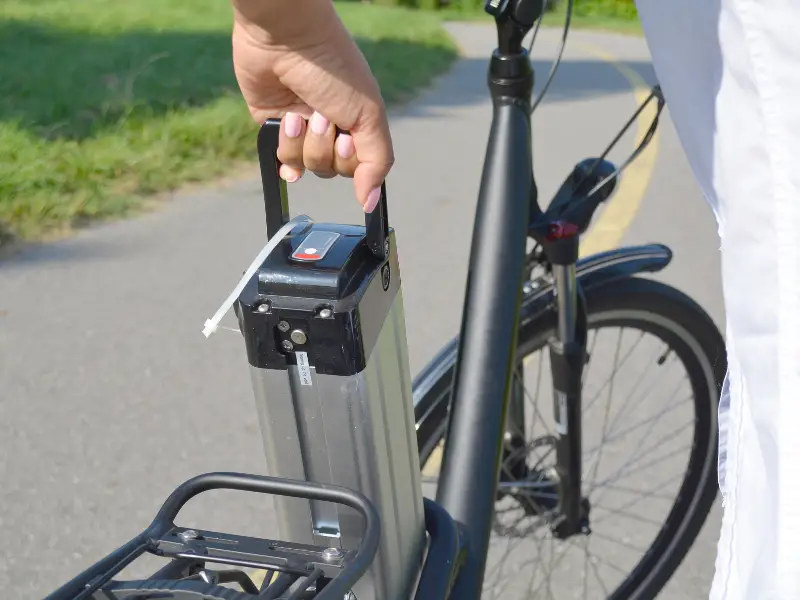
Tips for Proper Battery Care and Maintenance
Proper care and maintenance of your e-bike battery can help prevent common battery issues and help maximise battery range. Here are some tips:
- Charge your battery after each use, even if it’s not fully discharged.
- Store your battery in a cool, dry place.
- Avoid exposing your battery to extreme temperatures.
- Avoid overcharging your battery.
- Use the correct charger for your battery.
By following these tips, you can help to ensure that your e-bike battery stays in good condition and operates optimally.
Electrical System Issues
If you’re experiencing electrical system issues with your e-bike, a few common culprits could be causing the problem. Here are some of the most common issues and how to fix them:
Faulty Wiring or Connectors
If your e-bike is experiencing electrical issues, the wiring and connectors are the first to check. Over time, wires can become frayed, or connectors can become loose, which can cause various issues.
Inspect the wiring and connectors for any visible damage to fix this issue. If you notice any frayed wires or loose connectors, replace them. You may also consider using electrical tape to secure loose wires or connectors.
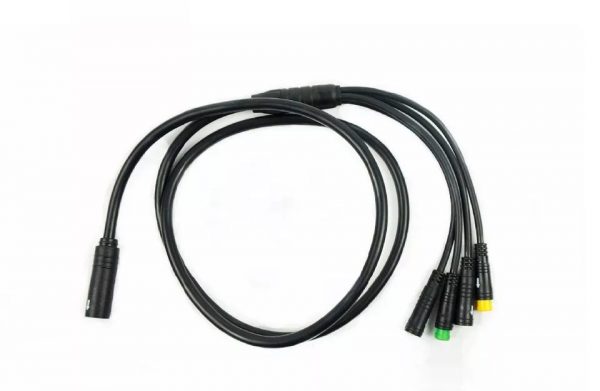
Malfunctioning Motor
If your e-bike’s motor is malfunctioning, it could be due to various issues. One common issue is a worn-out motor, which may need to be replaced. Another issue could be a problem with the motor controller, which regulates the motor’s speed and power.
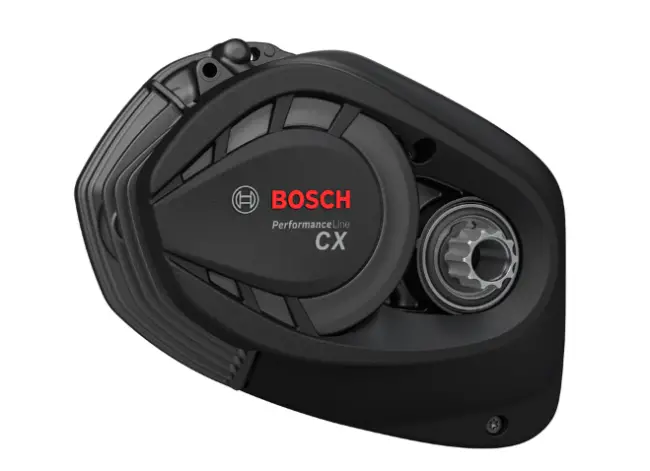
Check the motor’s wiring and connectors for any visible damage to diagnose and fix this issue. If everything looks good, you may need to take your e-bike to a professional to have the motor and controller tested, repaired, or replaced.
Display or Controller Problems
If your e-bike’s display or controller is malfunctioning, it can cause various issues with your bike’s performance. One common issue is a display that isn’t showing accurate information, such as battery life or speed. Another issue could be a controller that isn’t responding properly, such as failing to provide power to the motor.
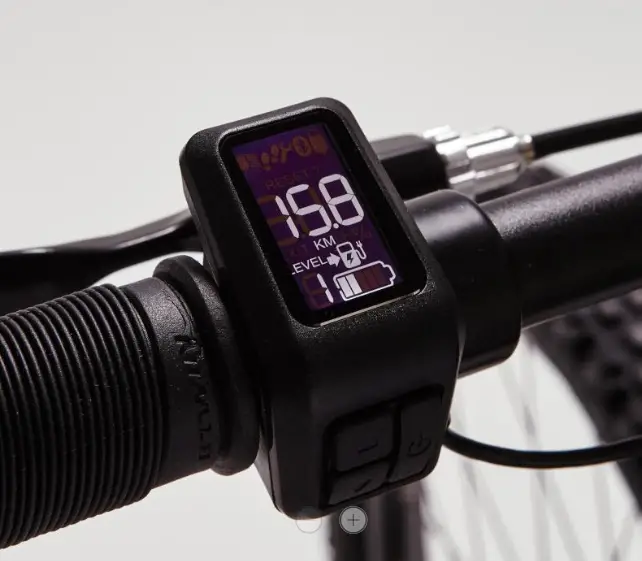
To fix this issue, check the wiring and connectors for any visible damage. If everything looks good, you may need to reset the display or controller by disconnecting the battery and waiting a few minutes before reconnecting it. If the issue persists, you may need to take your e-bike to a professional to have the display or controller repaired or replaced as needed.
Brake System Issues
One of the most important components of an e-bike is its brake system. It plays a crucial role in ensuring your safety while riding. However, e-bike brakes can develop problems over time, like any mechanical system. This section will discuss some common brake system issues you may encounter while riding your e-bike and how to fix them.
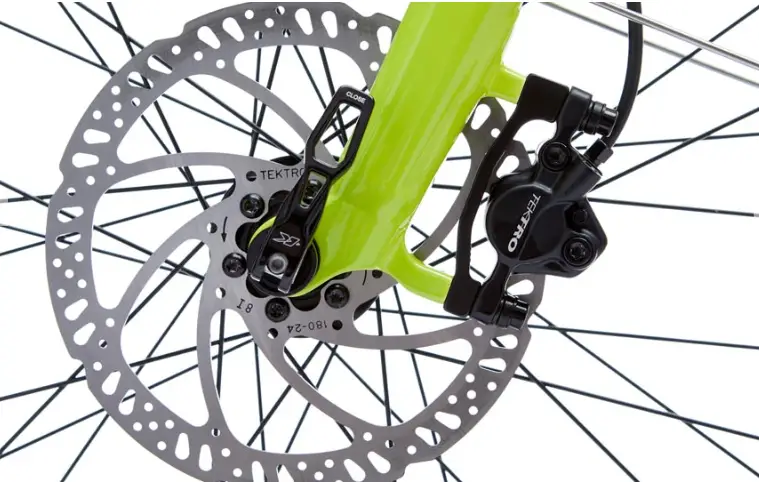
Brake noise or squeaking
If you hear a squeaking or grinding noise when you apply the brakes, it could be due to several reasons. A misaligned brake pad is one of the most common causes of brake noise. To fix this issue, you need to adjust the position of the brake pad. To do this, loosen the brake pad fixing bolt, adjust the position of the brake pad, and then tighten the bolt.
Another possible cause of brake noise is a dirty or contaminated brake rotor. To fix this issue, clean the rotor with a clean cloth and rubbing alcohol. If the rotor is severely contaminated, you may need to replace it.
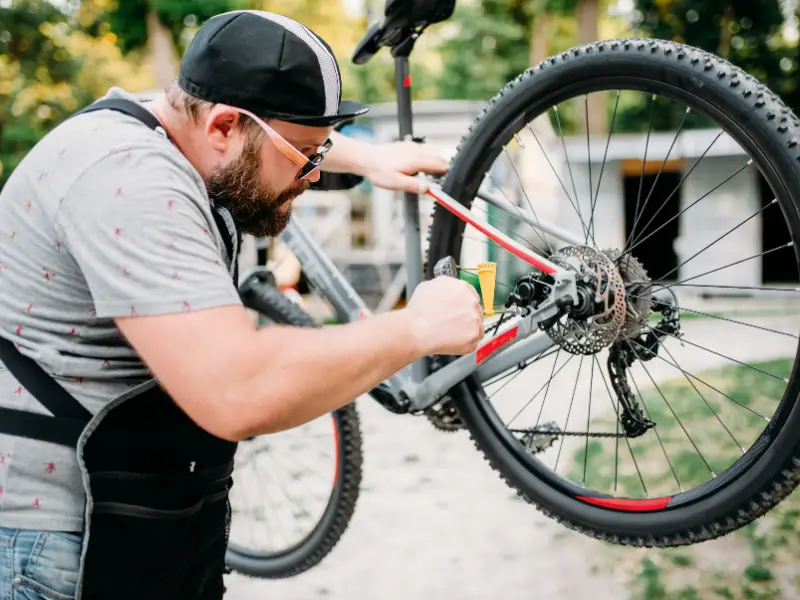
Poor braking performance
If you notice that your e-bike’s braking performance has decreased, it could be due to several reasons. One of the most common causes of poor braking performance is worn brake pads. Over time, the brake pads can wear down, reducing their effectiveness. To fix this issue, you need to replace the brake pads. Make sure to choose the right type of brake pads for your e-bike.
A loose or worn brake cable is another possible cause of poor braking performance. If the brake cable is loose or worn, it can affect the force applied to the brake pads. You need to adjust or replace the brake cable to fix this issue.
Finally, if your e-bike has hydraulic brakes and you need to pull the lever in a lot before the brakes work. Your brakes will likely need bleeding, or you may have a leak in the hydraulic system. If you suspect this, a qualified bike mechanic should inspect your braking system.
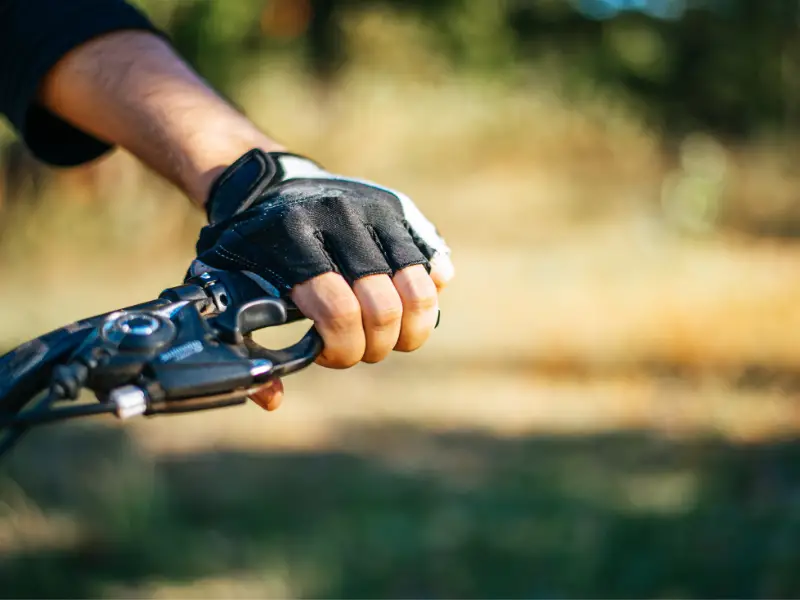
How to properly maintain e-bike brakes
Proper maintenance ensures that your e-bike’s brake system works effectively and lasts longer. Here are some tips on how to maintain your e-bike brakes:
- Regularly check the brake pads for wear and replace them if necessary.
- Clean the brake rotor with a clean cloth and rubbing alcohol to remove dirt or contaminants.
- Inspect the brake cable for wear and replace it if necessary.
- Make sure the brake pads are properly aligned with the rotor.
- Check the brake lever for proper adjustment and tightness.
Following these tips ensures that your e-bike’s brake system works effectively and provides a safe and enjoyable riding experience.
Drivetrain Issues
As an e-bike owner, you may encounter issues with your drivetrain. These issues can affect your bike’s performance and make your ride less enjoyable. Here are some common drivetrain issues and how to fix them.
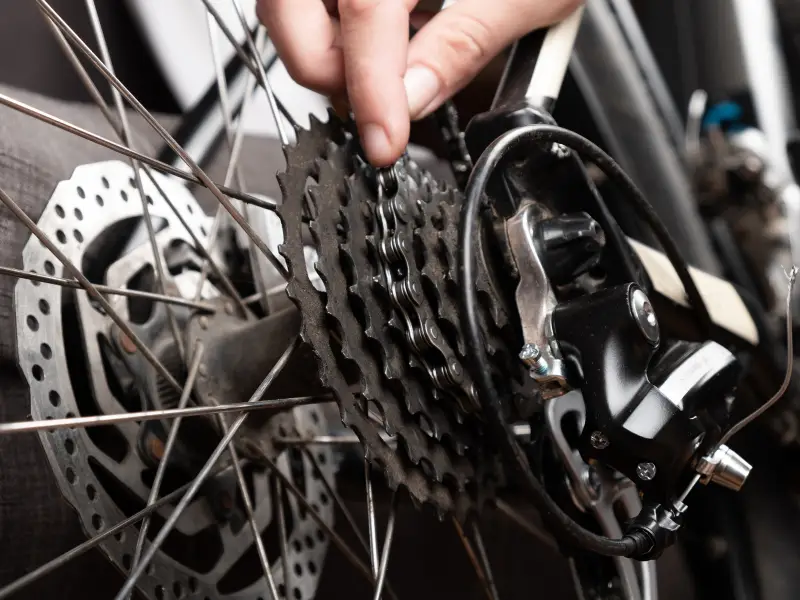
Chain problems
The chain is one of the most important components of your drivetrain. If it is not properly maintained, it can cause problems with shifting and reduce your bike’s efficiency. Here are some common chain problems and how to fix them:
- A loose chain can cause slippage and affect your bike’s performance. To fix this, adjust the tension of your chain. You can do this by loosening the rear wheel, moving it back slightly, and then tightening it again.
- A dirty or rusty chain can cause friction and reduce efficiency. To fix this, clean your chain regularly with a degreaser and lubricate it with chain oil.
- A broken chain can cause your bike to stop working altogether. Replace the broken link or the entire chain if necessary to fix this.
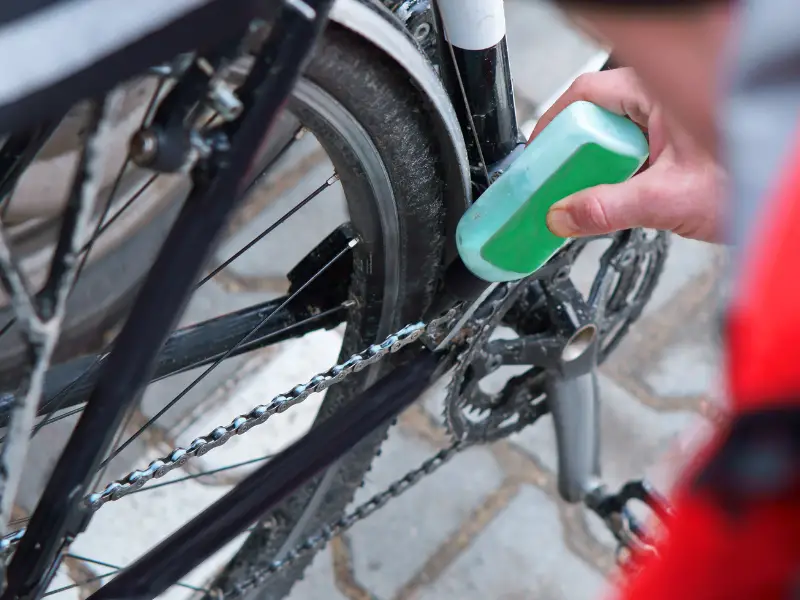
Derailleur issues
The derailleur is responsible for shifting your chain between gears. If it is not properly adjusted, it can cause your chain to slip or make it difficult to shift. Here are some common derailleur issues and how to fix them:
- A misaligned derailleur can cause your chain to rub against the derailleur cage. Adjust the limit screws on your derailleur to fix this until the chain runs smoothly.
- A loose derailleur cable can cause your shifting to be slow or inaccurate. Adjust the cable tension using the barrel adjuster on your derailleur to fix this.
- A bent derailleur hanger can cause your shifting to be inaccurate or make it difficult to shift. To fix this, replace the derailleur hanger or have it straightened by a professional.
- Worn or damaged gear cassette cog teeth.
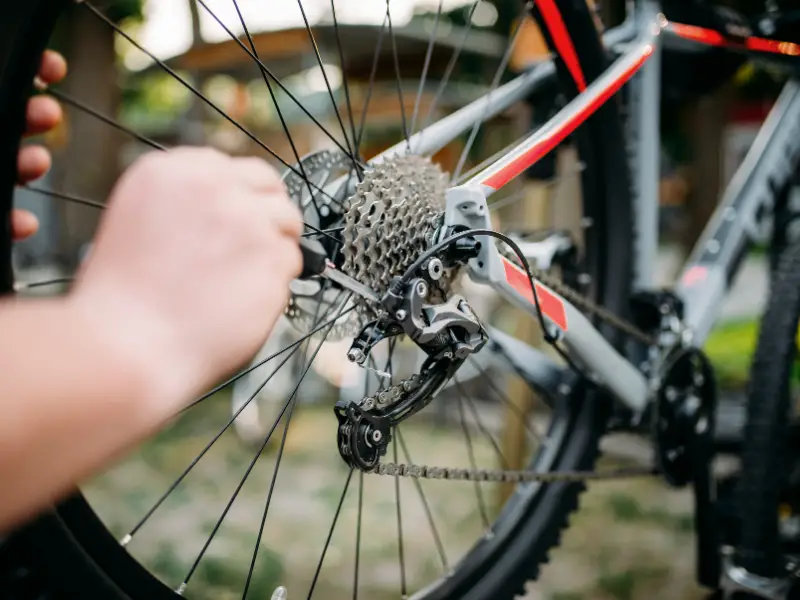
Regular drivetrain maintenance tips
Regular drivetrain maintenance can prevent issues and keep your e-bike running smoothly. Here are some tips:
- Clean and lubricate your chain regularly.
- Check your chain tension and adjust as necessary.
- Check your derailleur alignment and adjust as necessary.
- Replace your chain and cassette regularly to prevent wear and tear.
- Check your gear cassette cogs for worn or bent teeth
Frame and Suspension Issues
Regarding e-bikes, frame and suspension issues can cause a lot of trouble. In this section, we’ll cover some of the most common issues you may encounter with your e-bike’s frame and suspension and how to fix them.
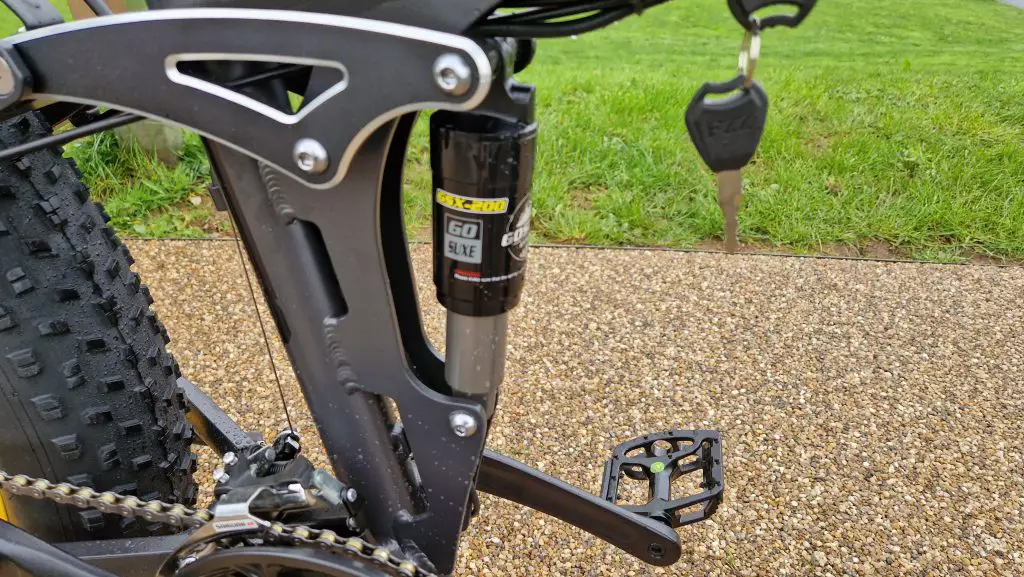
Frame damage or misalignment
One of the most common issues with e-bike frames is damage or misalignment. This can happen due to accidents, rough handling, or normal wear and tear. If you notice any cracks or dents in your frame, fixing them immediately is important to prevent further damage.
If your e-bike’s frame is misaligned, it can cause problems with steering, handling, and overall performance. You may notice that your bike pulls to one side or feels unstable when you ride it. In this case, you should take your bike to a professional bike shop for proper alignment.
Suspension system problems
E-bikes with suspension systems can also experience issues. If you notice that your suspension is not working properly, it could be due to several reasons. One common issue is a lack of lubrication, which can cause the suspension to become stiff and unresponsive. Make sure to lubricate your suspension system to keep it working properly regularly.
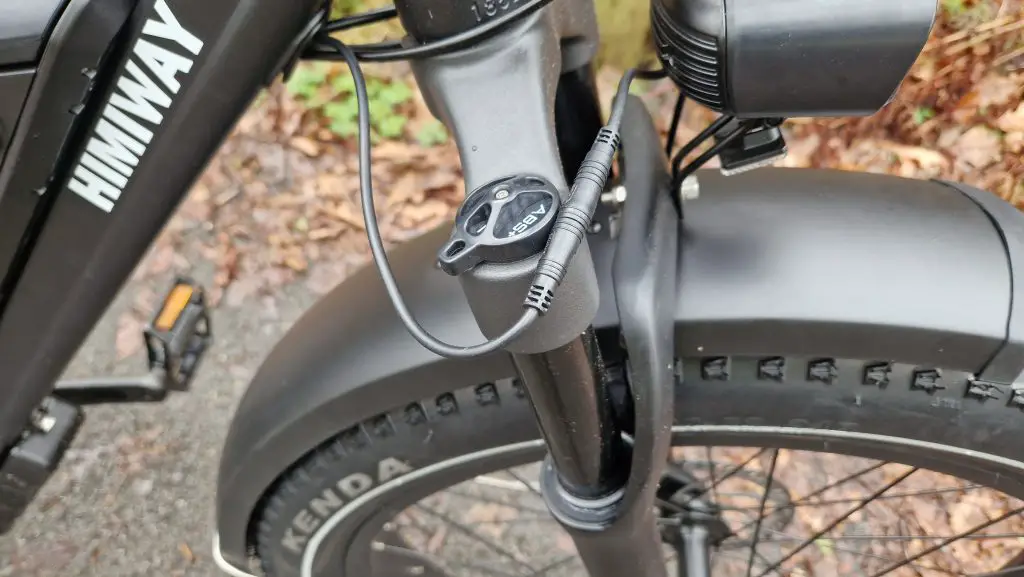
Another common issue with suspension systems is air leaks. If you notice that your suspension is losing air pressure, it could be due to a leak in the system. You can check for leaks by spraying soapy water on the suspension and looking for bubbles. If you find a leak, take your bike to a professional for repairs.
Regular inspection and care for frame and suspension
To prevent frame and suspension issues from occurring, it’s important to inspect and care for your e-bike regularly. This includes checking for any signs of damage or wear and tear and keeping your suspension system properly lubricated and maintained. By taking good care of your e-bike, you can help prevent issues from occurring and ensure that your bike stays in top condition for years to come.
Tyre and Wheel Issues
Regarding E-bikes, tyre and wheel issues are some of the most common problems riders face. Here are some of the most common tire and wheel issues that you might encounter and how to fix them:
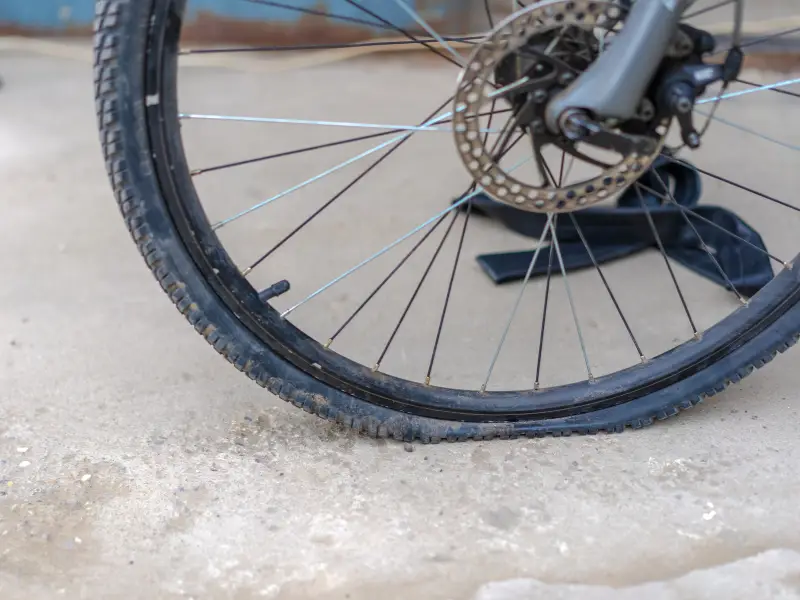
Tyre punctures or flats
One of the most common tyre issues you might face is a puncture or flat. Several things, including sharp objects on the road or trail, low tyre pressure, or worn-out tyres, can cause this.
If you get a puncture or flat, you must remove the wheel from the bike first. Once you have removed the wheel, you can remove the tyre from the rim and inspect the inner tube for any punctures or holes. You can patch a puncture with a tyre patch kit if you find a puncture. If the hole is too big, you may need to replace the inner tube.
You can reduce the risk of punctures by fitting a good puncture-resistant tyre. Most e-bike-specific tyres have a good degree of puncture resistance.
Wheel misalignment or wobble
If your E-bike wheel is wobbling or not spinning straight, this could be a sign of wheel misalignment. Several things, including loose spokes, a bent rim, or a damaged hub, can cause this.

You must first remove the wheel from the bike to fix this issue. You can inspect the spokes to ensure they are tight and properly aligned. If you find any loose spokes, you can tighten them using a spoke wrench. If the rim is bent, you may need to take it to a bike shop to have it trued. If the hub is damaged, you may need to replace it.
Proper tyre and wheel maintenance
To avoid these issues, it is important to maintain your E-bike’s tyres and wheels properly. This includes regularly checking the tire pressure, inspecting the tires for wear and tear, and ensuring the spokes are tight and properly aligned.
You should also regularly clean your bike’s wheels and rims to remove any dirt or debris that could cause damage. Additionally, you should lubricate the hub and bearings to ensure smooth and efficient operation.
Conclusion
Recap of Common E-Bike Issues and Solutions
Throughout this article, we have discussed some of the most common issues you may encounter with your e-bike and some solutions to fix them. These issues include battery, motor, controller malfunctions, and wiring faults. By following the troubleshooting steps we provided, you can save time and money by fixing these issues at home.
Importance of Regular Maintenance to Prevent Problems
While it is important to know how to troubleshoot common e-bike issues, it is equally important to prevent them from occurring in the first place. Regular e-bike maintenance can help prevent battery, motor, and controller issues. This includes keeping your bike clean, checking the tyre pressure, and ensuring all components are properly lubricated.
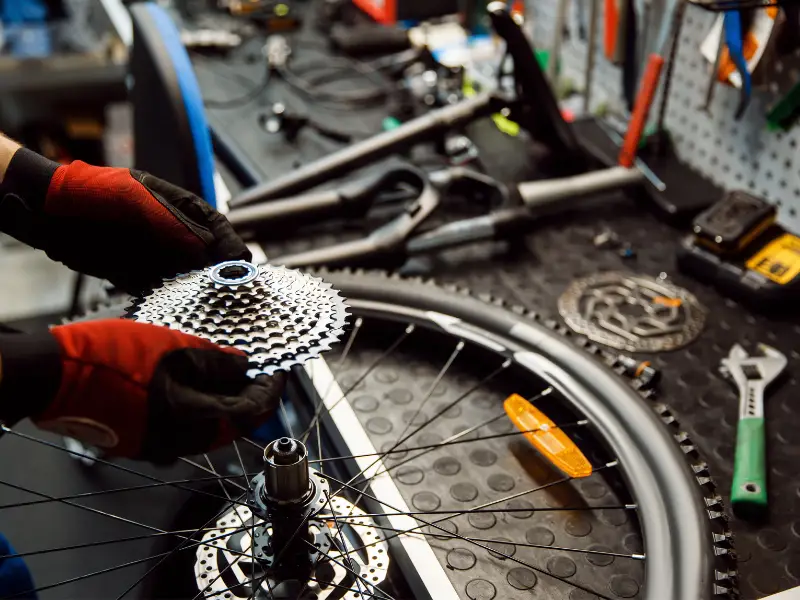
Maintaining your e-bike will increase the service life of the components and help keep performance and battery range at an optimal level.
Encouragement to Enjoy the Benefits of E-Biking While Staying Safe and Informed
E-biking can be a fun and efficient way to commute, exercise, or explore the outdoors. However, it is important to stay safe and informed while riding. Always wear a helmet, follow traffic laws, and be aware of your surroundings. Stay informed about any updates or recalls related to your e-bike model. Following these tips and troubleshooting steps, you can enjoy the benefits of e-biking while keeping your bike in top condition. Happy riding!
If you have any e-bike problems, please share them in the comments section below. We always reply to messages within 48 hours.

